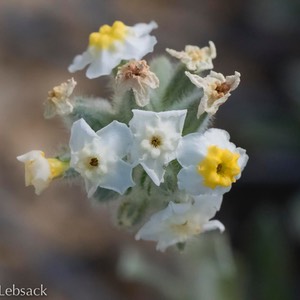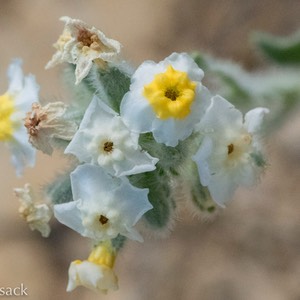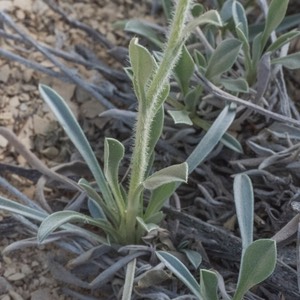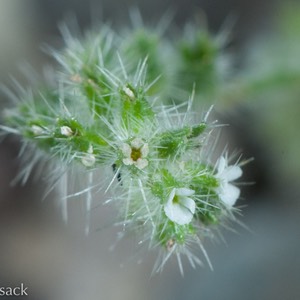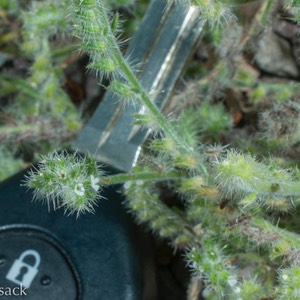Click on the images below to see larger versions.
| Scientific Name | Cryptantha crassipes (Oreocarya crassipes) | USDA PLANTS Symbol |
|
| Common Name | Terlingua Creek Catseye, Terlingua Creek Cryptantha | ITIS Taxonomic Serial No. |
|
| Family | Boraginaceae (Forget-me-not) | Texas Parks Reference | Click Here |
| Description |
Habitat: Chalky limestone and gypsum-laced clays; endemic to a small area in Brewster County. Plant: Erect perennial, hairy stems up to 12 inches tall. Leaves: Narrow, sessile, linear-spatulate to linear-oblanceolate leaves mostly in a basal clump, 1 to 2—1/3 inches long with very small hairs on surfaces and edges; stem leaves fewer, smaller, alternate. Inflorescence: Compact, dense, terminal clusters of small tubular blossoms each about 1/3-inch across, with 5 spreading, rounded white lobes and yellow center; sometimes clusters will occur at leaf axils. Bloom Period: March to June. References: "Rare Plants of Texas" by Poole, Carr, Price and Singhurst and Texas Parks and Wildlife. |
BONAP Distribution Map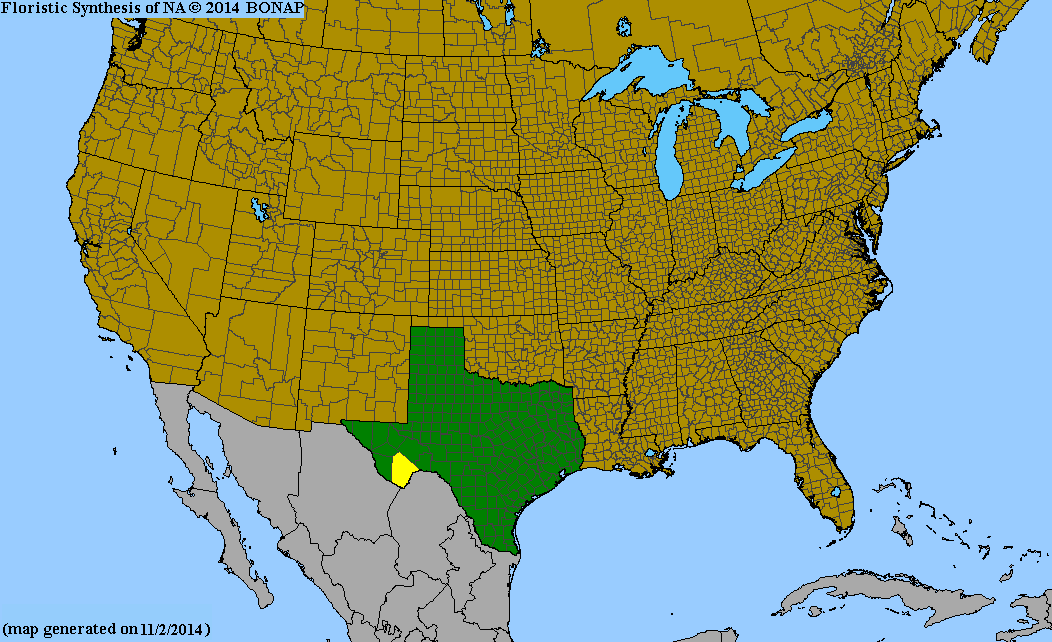
|
Texas Status: Native Rare Endangered |
| Scientific Name | Cryptantha crassisepala | USDA PLANTS Symbol |
|
| Common Name | Thicksepal Catseye, Thicksepal Cryptantha | ITIS Taxonomic Serial No. |
|
| Family | Boraginaceae (Forget-me-not) | SEINet Reference |
Click Here |
| Description |
Habitat: Dry sandy or gravelly places; dunes, slopes, grasslands. Plant: Short annual, 4 to 6 inches tall; several to many spreading stems with pungent bristles. Leaves: Very bristly leaves clustered at base and alternate on stems; sessile, narrowly oblanceolate, up to 2 inches long and less than 1/4-inch wide near base, becoming smaller upward. Inflorescence: Very small white flowers, 1/8-inch across, in dense curled spikes (scorpioide cymes) surrounded by a calyx less than 0.1 inch long, of thick, bristly sepals with prominent ribs; blossoms have 5 rounded lobes; no bracts below cymes. Cymes open and elongate up to 6 inches long as plant matures. Bloom Period: March to May. References: "Manual of the Vascular Plants of Texas" by Correll and Johnston and SEINet. |
BONAP Distribution Map
|
Texas Status: Native |
